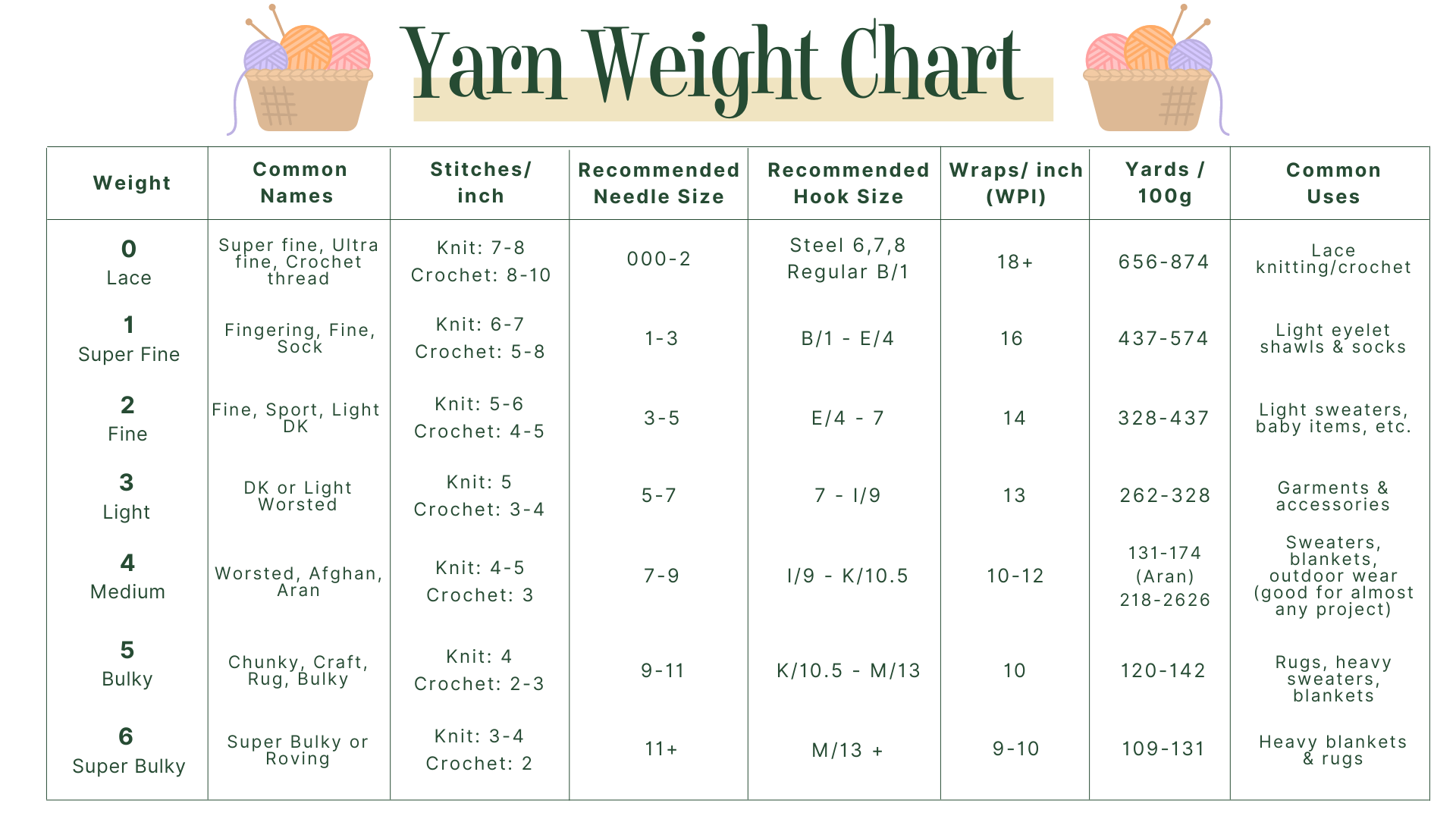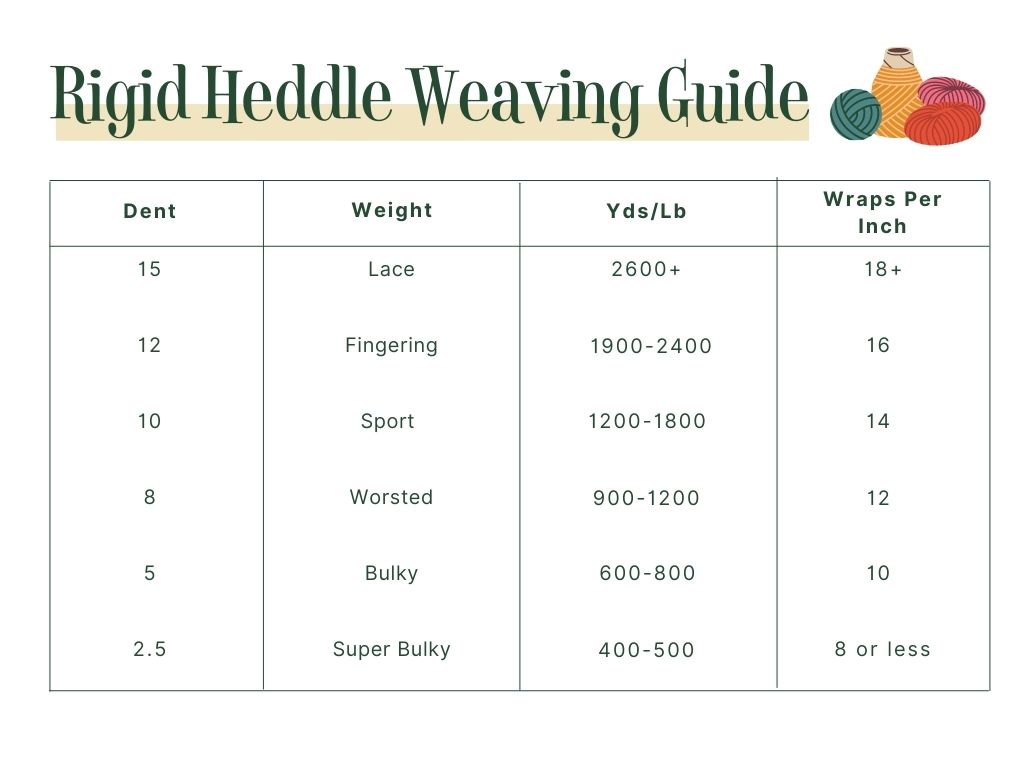Yarn Weights Helpful Explanation
Yarn Weights Charts - A Helpful Explanation
Yarn is typically described as knitting yarn or it is described in weights that are commonly associated with weaving. Both methods of describing the weight of the yarn have their individual quirks.
Knitting & Crochet Yarn Weight Chart
Knitting yarns have several methods of describing the weight of the yarn. The first is a a name that describes the weight of the yarn. The names are listed below in lightest to heaviest weights

Some yarns use the numbering system, some yards use a name, and other yarns use ‘stitches per inch’ which is listed after the weight of the number. (Malibrigo uses this system)
Keep in mind this is a very general guideline. There are many factors that work into all these weights and there is not a set standard that is followed by all knitting yarn companies. Also, knitting yarns tend to be fluffy and stretchy and they are washed before they reach the customer.
Weaving Yarn Weight Information
Yarns that are traditionally used for weaving more than knitting are typically described by a number such as 3/2, 5/2, 10/2 and so on. This is a very clear way to describe yarns that contain the same fiber. The first number is the size of each ply that makes up the yarn. The second number is how many plies the yarn has. So 3/2 is two plies of size three yarn and 5/2 is two plies of size five yarn. The number that describes the size is larger the thinner the yarn. So size 5 yarn is thinner than size 3 yarn. Just keep in mind that size 3 yarn in cotton is not the same as size 3 yarn in wool and linen.
Another method used to describe weaving yarns is ‘yards per pound’. It is a simple method in that the more yards per pound the thinner the yarn is! Yards per pound is noted on the knitting yarn chart as a way to help translate knitting yarn weights into an equivalent in weaving yarns.
BTW - Knitting yarns can be used to weave!
The last method that you commonly see to describe weaving yarn is wraps per inch, or WPI. (You will also see knitters using this term sometimes, and it is also common among spinners to describe their hand-spun yarn) WPI is valuable to weavers as it is a good place to start when you are figuring out how to weave a project.
For example: For a piece of cloth that has a balanced weave (the same number of threads going horizontally and vertically within an inch) a yarn that is 24 wraps per inch will be sett* at 12 ends per inch when you weave. If a weaver asks you what the set of a yarn is you can refer to this chart. Just remember that is not a hard and fast rule. There are many variables that factor into that decision and while you can tell a customer ‘A typical sett for that yarn is X’ you always want to add, "but the best way to figure out what will work best for your project is to make a sample!’
In a contrast to knitting yarns weaving yarns are not washed before they are shipped out. This helps the yarn better resist the greater friction of the weaving process versus the knitting process.
*Sett is how a weaver describes how many warp (vertical) threads per inch that makes up the cloth they are weaving
Sett Charts




Determining a Weaving Sett from Wraps per Inch
To guesstimate a weaving sett from wraps-per-inch, divide the wraps-per-inch by two to get an approximate sett for plain weave. By reducing the number of yarns in an inch by half, you leave room for the weft to go over and under the warp. If you are weaving lace, the sett will be a bit less than the plain weave sett. If you are weaving twill, it will be a bit more than the plain weave sett.
Here is a chart that lists the most common yarn setts.
Handwoven's Master Weaving Chart is also a good resource for finding the sett of most yarns.
Nothing, however, replaces sampling!
